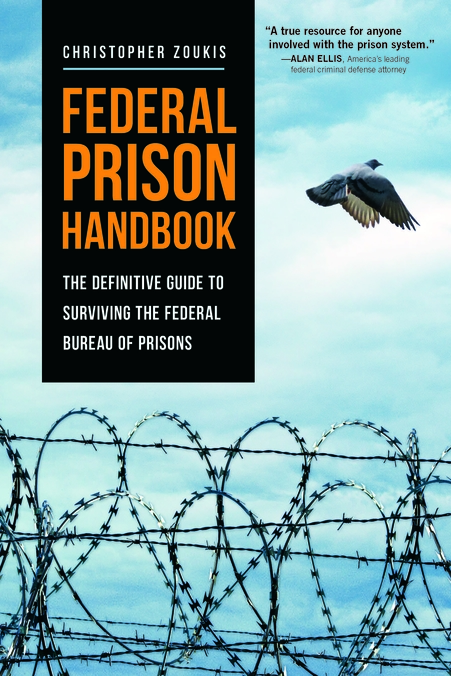Eleventh Circuit Holds RICO Conspiracy Doesn’t Qualify as Crime of Violence for § 924(c) Purposes and Defendant’s 120-Year Sentence Was Procedurally Unreasonable
Napoleon Harris, Nathaniel Harris, Charlie Green, Jerry Green, and Deonte Martin were all convicted of various § 924(c) counts for using, carrying, and discharging a firearm during and in relation to a “crime of violence.” The predicate “crime of violence” supporting the conviction was the RICO conspiracy of which they were convicted for their roles in a drug distribution organization in Bradenton, Florida. On appeal, they challenged their convictions and sentences under § 924(j), arguing that RICO conspiracy is not a crime of violence under § 924.
The Eleventh Circuit observed that § 924(c)(3)(A) defines “crime of violence” as a felony that “has as an element the use, attempted use, or threatened use of physical force against the person or property of another.” To determine if an offense meets that definition, courts employ the categorical approach, which means the court does not examine the actions of the particular defendants but instead “look[s] to whether the statutory elements of the predicate offense necessarily require, at a minimum, the threatened or attempted use of force.” Brown v. United States, 942 F.3d 1069 (11th Cir. 2019).
To establish a RICO conspiracy under 18 U.S.C. § 1962(d), the government must prove that the defendants objectively manifested, through words or actions, an agreement to participate in the conduct of the affairs of the enterprise through the commission of two or more predicate crimes. United States v. Starrett, 55 F.3d 1525 (11th Cir. 1995). RICO conspiracy requires neither proof of the commission of an overt act nor proof of an agreement to commit individual predicate acts. Id. Consequently, the elements of a RICO conspiracy focus solely on the agreement to commit a crime, which does not necessitate the existence of a threat or attempt to use force. Therefore, a RICO conspiracy is not a crime of violence as defined by § 924(c)(3)(A), the Court concluded.
Also, in the appeal, Corey Harris argued his sentence of 120 years in prison is both substantively and procedurally unreasonable. He pleaded guilty to three counts of distribution of cocaine base. A jury subsequently convicted him of distribution of marijuana and cocaine but acquitted him of the RICO conspiracy and of the murder of Brenton Coleman. However, his presentence report (“PSR”) referenced his involvement in the murder despite the acquittal and calculated his Guidelines range as 360 to 1,440 months.
At sentencing, he informed the court that he and the Government had reached an agreement to modify the Guidelines range to 210 to 262 months, which resolved all of his objections to the PSR except for his objection to the inclusion of his participation in the Coleman murder.
The district court confirmed that the agreement resolved all of Harris’ objections except his objection regarding the Coleman murder. The court overruled that objection and sentenced Harris to 360-month terms of imprisonment on each of his four convictions to be run consecutively for a total of 1,440 months (120 years). The court explained it was sentencing him based, in part, on its finding that a preponderance of the evidence showed Harris had participated in the murder of Coleman. And in the district court’s Statement of Reasons, it indicated it was sentencing Harris above the Guidelines range of 210 to 262 months because of his role in the Coleman murder.
But four days later, at a supplemental sentencing proceeding, the court stated it had treated the parties’ agreement as a joint motion for a downward departure and rejected it. Harris, the Government, and probation indicated to the court that they were under the impression the court had accepted the agreed-upon Guidelines calculation but had chosen to impose an upward variance. Harris’ counsel sought clarification of the issue four times, but the court never directly answered the question.
The Eleventh Circuit observed “[t]o be upheld on appeal, a sentence must be both procedurally and substantively reasonable.” United States v. Rodriguez, 628 F.3d 1258 (11th Cir. 2010). A sentence can be procedurally unreasonable if the district court improperly calculated the Guidelines range, failed to consider the 18 U.S.C. § 3553(a) sentencing factors, failed to adequately explain the sentence, or selected a sentence based on clearly erroneous facts. Gall v. United States, 552 U.S. 38 (2007). When pronouncing a sentence, the sentencing court is required only to demonstrate that it “considered the parties’ arguments and ha[d] a reasoned basis for exercising [its] ... decision[-]making authority.” United States v. Carpenter, 803 F.3d 1224 (11th Cir. 2015). If the district court decides that a departure from the Guidelines is in order, it should provide compelling and complete justifications sufficient to allow meaningful appellate review. United States v. Shaw, 560 F.3d 1230 (11th Cir. 2009). A court may make an upward variance at sentencing based upon conduct for which the defendant was acquitted as long as the judge’s finding is supported by a preponderance of the evidence. United States v. Faust, 456 F.3d 1342 (11th Cir. 2006).
The Court of Appeals reviews those findings for clear error, overturning a finding only if a review of the evidence leaves it with “a definite and firm conviction a mistake has been made.” United States v. Djmitrovski, 782 F.3d 622 (11th Cir. 2015).
The Court ruled that the district court inadequately explained Harris’ sentence when it failed to clarify which Guidelines range it applied. At the supplemental hearing, the district court stated it had rejected the agreed-upon range, implying it applied the 360 to 1,440 months range. But at the sentencing hearing and in its Statement of Reasons, the district court indicated it had accepted the Guidelines range of 210 to 262 months and applied an upward variance based upon Harris’ role in the murder of Coleman.
While it wasn’t clear which Guidelines range the district court used, it was clear that the district court’s finding that Harris had participated in the murder was clearly erroneous. Cellphone records plainly showed that Harris was over 25 miles from the scene when Coleman was murdered. The Court was “left with a firm conviction that the district court made a mistake by finding that [Harris] left his cell phones at home and drove to Bradenton to commit the Coleman murder.” Because the district court failed to adequately explain Harris’ sentence and relied on a clearly erroneous fact, the sentence imposed was procedurally unreasonable, the Court ruled.
In sum, the Court concluded that RICO conspiracy under 18 U.S.C § 1962(d) is not a crime of violence for 18 U.S.C. § 924 purposes and concluded that Corey Harris’ 120-year sentence was procedurally unreasonable.
As a digital subscriber to Criminal Legal News, you can access full text and downloads for this and other premium content.
Already a subscriber? Login
Related legal case
United States v. Green
| Year | 2020 |
|---|---|
| Cite | 969 F.3d 1194 (11th Cir. 2020) |
| Level | Court of Appeals |
| Conclusion | Bench Verdict |
| Appeals Court Edition | F.3d |





